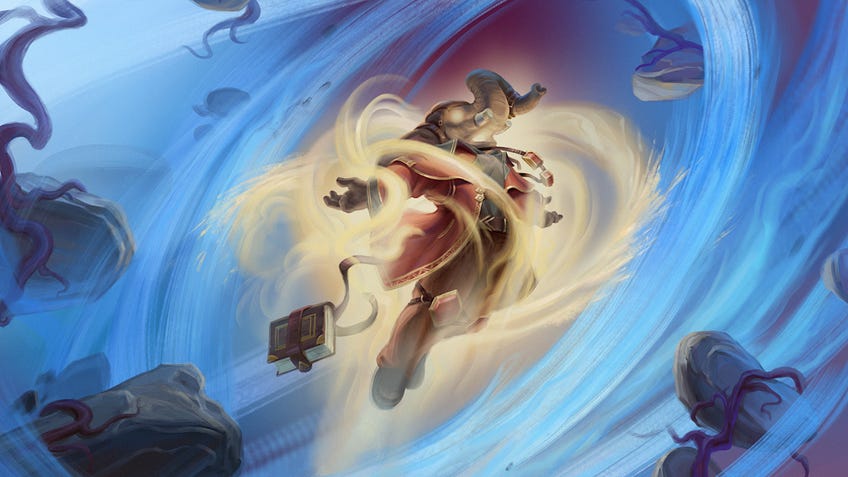Magic: The Gathering extends Standard card rotation window in a bid to revive staple format
No current card sets will rotate out until 2024.
Magic: The Gathering recently outlined the first step in a major overhaul to the Standard format, long considered the trading card game’s cornerstone experience. Plans will eventually encompass organised play in hobby shops, but publisher Wizards of the Coast began by extending Standard’s card rotation to a three-year cycle.
Aaron Forsythe, vice president of design at Wizards, and Billy Jenson, director of play programs, penned an article on MTG’s mothership site revealing the publisher’s broad goals for Standard’s new iteration. The addition of another year will increase players’ time with cards from two to three before they rotate out of what’s legal for Standard format play.
Upcoming set Wilds of Eldraine will inaugurate the new rotation schedule, and no cards will rotate out of play until 2024. That means Innistrad: Midnight Hunt and Crimson Vow, Kamigawa Neon Dynasty and Streets of New Capenna will stick around for another twelve months before their time in the Standard spotlight ends.
Forsythe said the team hopes this new approach will “give players more reasons to engage in Standard”, a format that once dominated casual and competitive play, alike. The rise and subsequent dominance of the multiplayer Commander format, along with the relatively smaller by fervent fanbases for Modern and Pioneer, has left Standard feeling like a dusty relic on the shelf.
Three-year cycles will give players more time with cards while still maintaining the format’s constantly rotating and evolving personality. The design team will reportedly take advantage of the increased breathing room to flesh out mechanics and archetypes across multiple sets instead of immediately leaving behind novel ideas as they quickly pivot to whatever world the TCG is travelling to next. Blocks of sets once provided a similar bookended arc to groups of mechanics, and Forsythe mentions that this new plan recaptures some of that potential without tying down the narrative and design teams overmuch.
The designers expressed a hope that this New Standard will germinate a greater diversity of archetypes within its environment that stick around for longer. Those who still play, largely on digital platform MTG Arena, will be familiar with the dominance of Mid-Range decks, agile but generic builds that value a Swiss Army Knife mentality over identity or creativity.
New Standard won’t necessarily kill Mid-Range decks but instead carve out more space for what the team referred to as “Mana colour + mechanic” decks, such as Blue-White Knights, Red-Green Battles or Black-White Incubate. Any rotating format worth its salt needs a healthy deckbuilding meta where certain popular flavours rise and fall without calcifying into tired, predictable trends.
Wizards says future steps will explain how the company will support Standard within local game stores and other physical locations, which have long been the lifeblood of both casual and competitive paper MTG. How they plan to reverse the neglect of what was once the TCG’s flagship are still being ironed out, according to Wizards, and will be made public at a later date.









